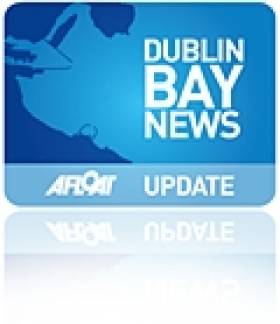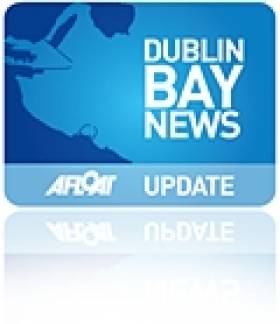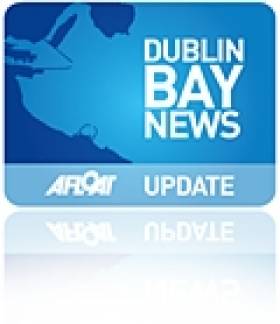Displaying items by tag: Ringsend Wastewater Treatment Plant.
#DUBLIN BAY RIGS – The jack-up rig Excalibur returned to Dublin Bay yesterday, having previously carried out preliminary bore test-site drilling work last year for a new sewage pipeline. As reported last year the sight of several floating structures gave the distinct impression that oil had been struck and again the presence of the rig's purpose is further from true with no such oil-exploratory activity taking place, writes Jehan Ashmore.
The rig is in Dublin Bay for several weeks and is to carry out further site investigation to ascertain the most suitable route of a new under the seabed laid sewage pipeline for the €220m Dublin Bay Project, where the principle contractor for the project is Fugro Seacore.
According to Dublin City Council, the impact of the new outfall location on the outer fringe of Dublin Bay will be 'localised'. They also claim that the project is to further improve water quality in Dublin Bay. Under the terms of the waste-water discharge license issued by the EPA, the pipeline must be completed by 2015.
Currently wastewater is discharged at Ringsend where the the Wastewater Treatment Plant in processes a 1.9m population equivalent. The new outfall pipe and associated works is to address increased demand and will be able to increase the capacity to a 2.1m population equivalent.
The Excalibur was towed from Holyhead by the tug MTS Valiant, to a position close to the Dublin Bay Buoy, the primary navigational mark which acts a 'round-about' for shipping using Dublin Port. The Excalibur is essentially a large barge with several sea-legs than can be lowered onto the seabed, where upon the barge itself rests while hoisted above the waterline.
On board is a crane, porta-cabin like facilities for crew, a service workboat and a lifeboat. During the construction process there will be a guard-boat which will monitor other shipping activity, as a safety precaution. One of the first vessels to pass Excalibur was the 113,000 tonnes giant cruiseship Carribean Princess which edged cautiously by while outward bound yesterday for Belfast.
The treatment plant in Ringsend was built in 2003, in which the superior plant replaced an older facility closer to the Poolbeg Harbour at the foot of the now disused ESB Power Station. Up until then, two-thirds of the greater Dublin region was treated but only at this primary level where 60% of waster-water went straight through the facility into the Liffey, the balance of 40% had polluntants removed to form sludge which was disposed out at sea.
This uneviable of tasks was performed by the wastewater disposal vessel Sir Joseph Bazalgette (1963/2,258grt) which saw some 40m gallons discharged into the spoiling grounds off Dublin Bay and Kish Lighthouse.
The former London County Council commissioned vessel worked on the Thames until sold to Dublin Corporation. On occasions she would head back to port via a transit of Dalkey Sound.
Despite her sale to overseas buyers in 1999, she remains one of the largest vessel's in modern times to make a passage of the sound that marks the southern approaches to Dublin Bay.
Drilling of Test Boreholes in Dublin Bay
The barge is contracted to Dublin City Council for the drilling of test boreholes in the approaches to and within Dublin Bay in relation to the Ringsend Wastewater Treatment Plant. Both jack-up barges 'Aran 250' and 'Excalibur' will be operating on a 24-hour / 7 days per week basis.
In attendence Sea Safari Tours RIB 'James Joyce', which normally operates as a tourist-sightseeing craft will act as a stanby boat during the rig operations. In addition a buoy will be positioned 300-metres of the barge during drill operations, which is expected to take approximately one week for each drill.
The project will also see the tug, Trojan providing supplies and to tow the jack-up rigs between locations in Dublin Bay. Both the James Joyce and the Trojan will be based out of the Poolbeg Marina, in the centre of the port.
Since the start of October, the project has also required the services of the yellow-hulled catamaran, Xplorer to carry out a bathymetric survey of Dublin Bay.
For further detailed information, please consult Notices to Mariners (No. 14 and 15) listed on the Dublin Port Company website by logging onto this link: http://www.dublinport.ie/information-centre/notice-to-mariners/
In addition to www.dublincity.ie
Underwater Dublin Bay Survey to Start on Friday






























































